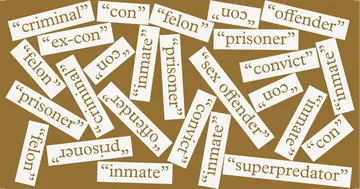Yesterday, the city unveiled a plan to largely eliminate cash bail for New Yorkers charged with low-level or nonviolent crimes. This long overdue step has the potential to reshape pretrial detention in New York City and break the causal connection between poverty and incarceration. And that is a good thing. But in revamping the bail system, there are also tremendous pitfalls, and the city’s proposed cure may be nearly as bad as the disease.
Before we assemble a new government apparatus that extends the reach of the criminal justice system and broadens government-administered social control of marginalized communities, we should ask ourselves whether these measures are necessary, and whom their burden will fall upon. After all, once such structures are built, they are almost impossible to dismantle.
There is no question but that ending cash bail makes a great deal of sense. The failure to return to court — the only issue that bail is designed to address — is a tiny problem when compared to the distortive consequences of being held on bail. According to data from the New York City Criminal Justice Agency, only 4 percent of people charged with felonies, and 7 percent of those charged with non-felonies fail to appear in court within 30 days of their scheduled court dates. That data is also reflected in the success of the Bronx Freedom Fund, a charitable bail organization that we founded in order to post bail for Bronx Defenders clients facing misdemeanor charges. Of the nearly 230 clients that the Bronx Freedom Fund has supported since 2013, 97 percent have returned for all of their court dates, demonstrating that neither cash bail nor any other onerous pretrial release conditions are necessary to ensure a defendant’s appearance.
Guilty or innocent, the urge to intervene in the lives of those we shovel into the criminal justice system has proven almost irresistible to politicians over the years. So despite the fact that the most effective method of ensuring that people return to court is to just release them with nothing more than a friendly reminder of their court dates via calls or text messages, the city has already made clear that it will aim to create a “pretrial-services system” at an estimated annual cost of $18 million.
In the pretrial services model, released defendants are steered to an agency that can impose conditions on their freedom. Failure to maintain compliance with mandated services can lead to violations of supervised release, reincarceration, and other penalties. The problem with the pretrial-services model is that these “services,” which are a condition of one’s release, are often identical to, and sometimes far more onerous than the sentence one would receive for actually being guilty of the crime.
Here’s how it works: a young man arrested for shoplifting might plead guilty and be sentenced to perform one day of community service. But that same defendant who is innocent of the charge might, as a condition of his release, be ordered to attend a one-day drug education program, report to a pretrial-services officer every week, and undergo drug treatment or testing — all because he claimed to be innocent and sought to challenge his arrest. In effect, the pretrial-services model imposes supervisory oversight on the innocent in ways that are more onerous than what one would face if actually guilty. The system thereby replicates (albeit in a more benign fashion) the very problem it seeks to solve: inverting innocent until proven guilty, and placing punishment before adjudication.
In 2013, the NYPD arrested over 350,000 people. Almost all of these arrests were for low-level, nonviolent crimes — the very cases that disproportionately populate the city’s courtrooms and dockets. These quality-of-life arrests fall disproportionately on poor people of color — the very people who will most often be subject to the terms and conditions of the new, pretrial-services scheme. And while “supervision” may sound good on the evening news, it is a terrible thing for those caught up in it — many of them struggling to get by, working two jobs with inflexible hours while juggling childcare and other responsibilities. For them, the bureaucratic necessitates of compliance can become terribly destabilizing.
Of course none of this tinkering would be necessary if judges simply used the tools available to them right now. Indeed, the entire pretrial-detention system could be ended tonight — if only judges would set personal-recognizance bonds or other forms of bail that involve signing a promissory note rather than surrendering cash up-front. Unfortunately, it is because judges have so utterly failed to use these already extant forms of bail that we are now facing the creation of a pretrial-services system.
As long as we continue to churn people through the criminal justice system for low-level offenses, it will be important to ease the burdens they face while awaiting trial. Pretrial programs that supervise and mandate people to receive services or undergo drug testing, while proposed with the best of intentions, threaten to substantially undercut this goal. It would be a shame if our genuine desire to alleviate the unjust suffering caused by our current system of bail led us to impose a new system larded with the same old flaws.
Robin Steinberg is the executive director of the Bronx Defenders, and David Feige is the board chair of the Bronx Freedom Fund.
